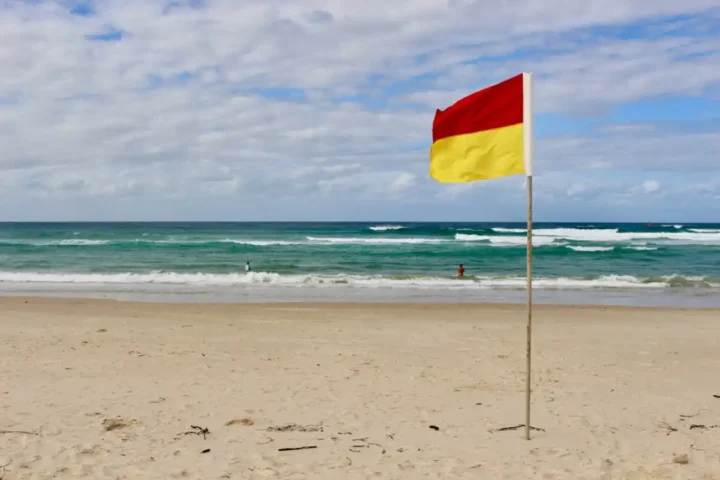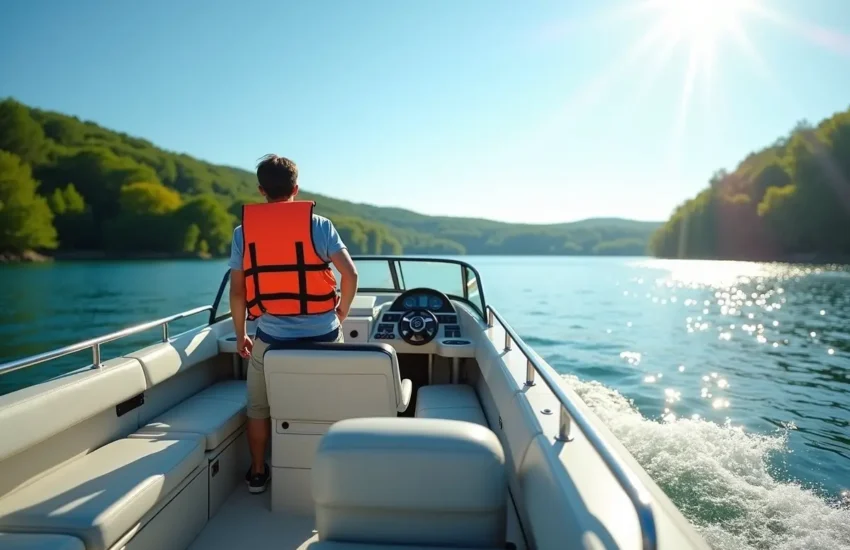7 Ways to Know if Beaches Near You Are Right for You
Before setting out, consider what kind of experience you’re seeking. Not all beaches offer the same atmosphere, and understanding your preferred “vibe” is crucial for a satisfying visit. Are you looking for energetic crowds and lively activities, or a tranquil escape into nature?
For those who thrive on energy and social interaction, certain beaches are renowned for their busy atmosphere. Clearwater Beach, for instance, is famous for its vibrant scene. As Tripadvisor’s #1 Beach in the U.S. in multiple years (2019, 2018, and 2016), it’s a hub of activity with popular beachfront restaurants and a nightly sunset celebration at Pier 60.
Similarly, St. Pete Beach, named the #1 Beach in the U.S. for 2021 by Tripadvisor’s community of travelers, offers a lively environment with plenty of options for fun after the sun goes down, including numerous beach bars. These spots are ideal for groups of friends or solo travelers looking to meet new people and enjoy a dynamic setting.
If your preference leans towards family-friendly fun, beaches with calm waters, playgrounds, and dedicated amenities are key. Fort De Soto Park is often cited as an excellent choice for families, offering calm, warm waters, a pirate-themed playground, and expansive soft sands perfect for children to explore. Indian Rocks Beach also provides a more laid-back, family-oriented atmosphere compared to its busier neighbors, making it a great option for those with younger children seeking a relaxed day by the sea.
Conversely, if you yearn for peace, solitude, and a deep connection with nature, less developed beaches or state parks might be your haven. Caladesi Island State Park is a prime example of a pristine, secluded beach experience. Accessible primarily by ferry from Honeymoon Island or by private boat/kayak, it offers a serene environment with no commercial development, allowing visitors to truly disconnect.
Honeymoon Island State Park itself, with its more than four miles of beach and a three-mile trail through one of the last remaining virgin slash pine forests, provides ample opportunities for quiet walks, shelling, and wildlife observation. These natural gems are perfect for couples seeking a romantic getaway or solo travelers looking for introspection and tranquility.
Understanding these distinct vibes helps you narrow down your search and ensures that the beach you choose aligns perfectly with your expectations for the day.

Evaluate On-Site Facilities and Amenities
Once you’ve identified your desired beach vibe, the next crucial step is to assess the available facilities and amenities. The presence or absence of certain conveniences can significantly impact your comfort and enjoyment, especially for specific groups like families with young children or individuals with accessibility needs.
Essential facilities often include restrooms and showers, which are vital for a comfortable day out. Knowing if these are readily available and well-maintained can save you from inconvenient situations. For instance, Zuma Beach in Malibu, California, is well-equipped with restrooms, showers, and even concession stands, making it a convenient choice for a full day. Similarly, North Beach, MD, provides bathrooms, showers, and changing rooms, though their seasonal hours should be noted.
Lifeguard presence is another critical amenity, especially if you plan on swimming or if you’re visiting with children. Beaches with active lifeguard services provide an added layer of safety. Many popular beaches, like those in New York City, clearly state their lifeguard hours (typically 10 a.m. to 6 p.m. during the season) and prohibit swimming when lifeguards are not on duty. Conversely, some beaches, like North Beach, MD, explicitly state that no lifeguards are on duty, requiring visitors to swim at their own risk.
Accessibility features are paramount for visitors with mobility challenges. Look for beaches that offer access mats, beach wheelchairs, or designated accessible pathways. Zuma Beach, for example, provides access mats from April to October and beach wheelchairs available for reservation at the concession stand. This thoughtful provision ensures that everyone can enjoy the shoreline.
Beyond the basics, consider amenities like picnic areas and grills for those planning a meal, or playgrounds for families. Fort De Soto Park is lauded for its picnic areas and a dedicated pirate-themed playground, making it a family favorite.
For those who prefer not to lug all their gear, the availability of chair and umbrella rentals can be a game-changer. Some beaches, like North Beach, MD, offer rentals directly on-site, simplifying your beach day. Additionally, if you’re interested in activities beyond swimming, check for water sport rentals such as kayaks, paddleboards, or even windsurfing equipment.
Beaches like Fred Howard Park and Sand Key Park in Pinellas County are good examples of regional parks with a range of amenities designed to improve the visitor experience, often including picnic shelters, restrooms, and designated activity areas. By evaluating these on-site facilities, you can ensure your chosen beach meets all your practical needs for a comfortable and enjoyable outing.
Investigate Logistics: Access, Parking, and Fees
Understanding the logistical aspects of beach access, parking, and associated fees is paramount to a stress-free visit. Overlooking these details can lead to frustration, unexpected costs, or even a wasted trip.
Parking availability is often the first concern. Popular beaches, especially during peak season or weekends, can quickly fill their lots. Researching the number of available spaces can give you an idea of how early you might need to arrive.
Zuma Beach in Los Angeles County, for instance, boasts approximately 2,000 parking spaces across eight lots, which is substantial but can still get crowded. In contrast, some hidden gems or smaller beaches might have very limited parking, necessitating an early arrival or alternative transportation.
Daily and hourly fees for parking are common at many beaches, particularly at state parks or county-maintained facilities. These fees can vary significantly. Pinellas County, Florida, for example, is implementing a $6 per day parking fee at its three regional beach parks (Fort De Soto, Sand Key, and Fred Howard) starting January 1, 2025.
Other locations might have hourly rates, like Englewood Beach in Florida, which charges $0.75 per hour via the ParkMobile parking app. Always check if there are discounts for locals, seniors, or military personnel, as these can offer significant savings.
Parking payment apps like ParkMobile are becoming increasingly common, allowing for convenient payment directly from your smartphone. Familiarizing yourself with these apps beforehand can streamline your arrival. Some beaches, like Sauble Beach in Ontario, even offer season passes for residents and non-residents, which can be cost-effective for frequent visitors.
Public transportation options can be a viable alternative to driving, especially in urban areas or to avoid parking hassles. New York City beaches, such as Manhattan Beach, are often accessible by bus or subway, offering a convenient way to reach the sand. For more remote or island beaches, ferry or boat access is often the only way to reach them.
Caladesi Island State Park is a prime example, requiring a ferry ride from Honeymoon Island ($18 round trip for adults, $9 for kids 6-10) or access by private boat or kayak. Similarly, Egmont Key at the mouth of Tampa Bay is a unique coastal experience only accessible by ferry or private boat. Planning for these specific transport methods is essential.
A comprehensive guide to nearby beaches can also highlight these logistical details, providing invaluable insights into the best ways to reach your chosen destination and what costs to anticipate. By thoroughly investigating access, parking, and fees, you can avoid unwelcome surprises and ensure a smooth start to your beach day.
Understand the Rules and Safety Measures
A truly enjoyable beach experience hinges on understanding and adhering to local rules and safety measures. These regulations are put in place not only for your safety but also to preserve the natural environment and ensure a pleasant visit for everyone.
Pet policies are a common regulation, as not all beaches are dog-friendly. While some, like the designated dog beach at Honeymoon Island State Park or Brohard Paw Park in Sarasota, welcome furry friends, many have strict restrictions or designated areas. For instance, Camber Sands in East Sussex, UK, allows dogs on some sections year-round but excludes them from zoned areas during peak season (May 1 to September 30). Always check specific policies to avoid fines or having to turn back.
Rules regarding alcohol and glass containers are also prevalent. Many public beaches, such as North Beach, MD, strictly prohibit alcohol and glass to prevent accidents and maintain a family-friendly atmosphere.
Similarly, barbecue regulations vary; some beaches allow only gas-powered BBQs in specific areas, while disposable or coal BBQs might be forbidden, as is the case at Camber Sands. Always dispose of litter responsibly, as some beaches, like Camber Sands, ask visitors to take their trash home if bins are full, to protect wildlife and the environment.
Swimming zones and lifeguard hours are crucial safety considerations. It’s imperative to swim only when lifeguards are on duty and within designated areas. Beaches often use beach safety flags to communicate current conditions and hazards. A red flag, for example, typically indicates dangerous conditions or no swimming allowed. Familiarize yourself with these flags before entering the water.

Rip current warnings are particularly important for ocean beaches. Understanding what rip currents are, how to spot them, and what to do if caught in one can be life-saving. Resources like the National Weather Service provide valuable safety tips. NYC beaches, for instance, link to such resources to educate visitors.
Beyond these, be aware of other specific regulations:
- Smoking and vaping bans: Common on many public beaches to ensure clean air and reduce litter.
- Dune protection: Many coastal areas, like Camber Sands, have fragile dune systems that are protected, with rules against walking on them or digging.
- Wildlife protection: Respect nesting areas for sea turtles (common in Sarasota County) or bird sanctuaries. Honeymoon Island, for example, is home to various bird species, and visitors are encouraged to observe them respectfully from a distance.
By taking a few moments to understand the rules and safety measures for your chosen beach, you contribute to a safer, cleaner, and more enjoyable experience for everyone.
5. Explore Activities and Nearby Attractions
A beach day isn’t just about sand and sun; it’s also about the array of activities you can enjoy and the vibrant attractions that might be just a stone’s throw away. Exploring these options can transform a simple outing into a memorable adventure.
Naturally, swimming and sunbathing are primary draws, but many beaches offer much more. For the active visitor, surfing and paddleboarding are popular, with spots like Zuma Beach known for its mild waves suitable for surfing. Kayaking and fishing are also widely enjoyed. Calm waters, such as those found at Fort De Soto Park, are ideal for kayaking, and many beaches feature fishing piers or designated fishing areas.
Shelling opportunities are a delight for collectors, particularly at beaches like Honeymoon Island, which is known for its diverse shell collection. Wildlife watching can add an enriching dimension to your visit.
From spotting dolphins and seals off Zuma Beach during winter migration to observing gopher tortoises and various bird species at Honeymoon Island State Park, the natural world offers endless fascination. Some beaches even host unique natural features, such as the sand dune system at Camber Sands in East Sussex, UK, or the unspoiled natural beauty of Egmont Key.
Beyond the immediate beach, consider what lies in the surrounding area. Nearby restaurants and bars can complete your day. Clearwater Beach boasts numerous beachfront restaurants and lively bars, perfect for a meal or a drink after soaking up the sun. Similarly, St. Pete Beach offers a range of dining and nightlife options, including the iconic Don Cesar Hotel with its beach bar.
For a more local culinary experience, the amazing local restaurants in Pass-a-Grille or Indian Rocks Beach are worth exploring. For those interested in expanding their culinary horizons, resources like a guide to interesting places to eat or best food destinations can provide excellent suggestions for pre- or post-beach dining.
Piers and boardwalks often serve as focal points for activity. Clearwater Beach’s Pier 60 Sunset Celebration is a nightly event featuring artisans, street performers, and stunning sunset views, making it a must-visit attraction. Unique local events can also be a draw, such as the weekly Sunday drum circle behind the resort at Treasure Island, which creates a vibrant, communal atmosphere as the sun sets.
For adventurous souls, boat tours or snorkeling excursions can provide new perspectives. A kayak tour to Shell Key from St. Pete Beach offers a chance to explore secluded areas, while tours to Egmont Key provide opportunities for snorkeling and exploring a historic lighthouse. Whether you’re seeking thrills, relaxation, or cultural immersion, researching the activities and nearby attractions will help you craft the perfect beach day.
How to Find the Perfect Beaches Near Me
Finding the ideal beach near you doesn’t have to be a shot in the dark. By systematically applying the factors we’ve discussed and leveraging available online tools, you can confidently pinpoint the perfect sandy escape.
A Quick Checklist for Finding Beaches Near Me
Before heading out, run through this quick checklist to ensure your chosen beach aligns with your desires:
- Vibe Check: Does this beach match my desired atmosphere (lively, family-friendly, quiet, natural)?
- Amenities List: Are essential facilities like restrooms, showers, and lifeguards available? Does it offer specific amenities I need (picnic areas, rentals, accessibility)?
- Logistics Plan: Have I checked parking availability, fees, and payment methods? Do I need to consider public transport, ferry, or boat access?
- Rules Review: Am I aware of pet policies, alcohol restrictions, BBQ rules, and swimming regulations?
- Safety Check: Have I noted lifeguard hours, checked for rip current warnings, and understood any safety flags?
- Activity Goals: Does the beach offer the activities I want (swimming, surfing, shelling, wildlife watching)?
- Natural Features: Does it have unique natural elements I’d like to explore (dunes, special wildlife)?
- Local Attractions: Are there nearby restaurants, bars, or other attractions to visit before or after?
Using Online Tools to Research Beaches Near Me
The internet is your best friend when researching beaches. Here’s how to use it effectively:
- Official County and State Park Websites: These are the most authoritative sources for information on facilities, fees, rules, and conditions. For example, Pinellas County’s website provides detailed information on its regional beach parks and access sites, including parking fees and amenities. Florida State Parks websites offer comprehensive guides for places like Honeymoon Island and Caladesi Island.
- Local Tourism Boards: Websites like Visit St. Pete/Clearwater or Sarasota’s tourism sites offer curated information, often categorizing beaches by mood or activity, and highlighting awards or unique features. They often have real-time updates and FAQs.
- Live Beach Webcams: Many popular beaches, such as Clearwater Beach, offer live webcams. These are excellent for getting a real-time sense of crowd levels, weather conditions, and general atmosphere before you leave.
- Water Quality Reports: Before swimming, always check for water quality advisories or closures. In New York City, the Department of Health and Mental Hygiene’s New York City Area Beaches page provides crucial updates.
- Google Maps for Travel Time and Reviews: Use Google Maps to calculate travel time from your location and read recent reviews from other visitors. Reviews can offer practical insights into parking challenges, crowd levels, or unexpected amenities.
By combining a clear understanding of your preferences with thorough online research, you’ll be well-equipped to find the perfect beach near you for your next outing.
Frequently Asked Questions about Choosing a Beach
Here are some common questions people have when planning a beach trip, along with answers drawing from our research:
How can I find out if a beach is crowded before I go?
Checking crowd levels before you leave can significantly improve your beach experience, especially during peak seasons or holidays. Several methods can help:
- Live Webcams: Many popular beaches, like Clearwater Beach, offer live webcams that provide a real-time view of the shoreline. This is often the most accurate way to gauge current crowd levels.
- Official Tourism Websites: Some local tourism agencies and county park websites in the Sarasota region provide information on current crowd levels.
- Social Media: Check recent posts on platforms like Instagram or Twitter using location tags or hashtags (e.g., #clearwaterbeach, #siestakey). Recent photos and comments can give you a good idea of how busy a beach is. Pinellas County Government often posts updates on their social media channels like Facebook and Twitter.
- Google Maps Traffic Layer: While not specific to beach crowds, the traffic layer on Google Maps can indicate congestion on roads leading to popular beaches, suggesting higher visitor numbers.
- Timing Your Visit: As a general rule, visiting early in the morning or later in the afternoon (especially on weekdays) can help you avoid peak crowds. For example, Camber Sands advises visiting early morning or late afternoon for a quieter experience.
What’s the best way to find dog-friendly beaches?
Finding a beach where your furry companion is welcome requires specific research, as pet policies vary widely:
- Dedicated Dog Parks/Beaches: Look for beaches explicitly designated as dog parks or pet-friendly areas. Fort De Soto Park in Pinellas County has a well-known dog beach, and Sarasota’s Brohard Paw Park is another excellent example.
- Official Park Websites: State and county park websites will clearly outline their pet policies, including whether dogs are allowed, if they must be leashed, and if there are specific off-leash areas. Honeymoon Island State Park, for instance, has a designated dog beach.
- Local Tourism Guides: Many tourism websites will have sections dedicated to pet-friendly attractions, including beaches.
- Review Sites: Websites like Tripadvisor or Yelp, and even specialized pet travel blogs, often include reviews and filters for pet-friendly locations.
- Specific Regulations: Even on dog-friendly beaches, there might be seasonal restrictions or zoned areas where pets are not allowed during certain times, as seen at Camber Sands. Always check these details before you go.
Where can I check for current beach conditions like water quality?
Staying informed about current beach conditions, especially water quality, is vital for health and safety:
- Official Health Department Websites: For water quality, the most reliable source is typically the local or state health department. For example, New York City provides water quality advisories on the NYC Department of Health and Mental Hygiene’s New York City Area Beaches page.
- Local Tourism/Beach Websites: Many regional tourism sites (for Sarasota area beaches) or Visit St. Pete/Clearwater, provide real-time updates on water temperatures, wind conditions, and any advisories.
- Park Management Websites: Websites for specific state or county parks often post daily updates on conditions, including any closures due to environmental factors or safety concerns.
- Weather Apps and Marine Forecasts: For general conditions like wind, waves, and potential rip currents, a reliable weather app or marine forecast can provide valuable information. The National Weather Service also offers rip current safety information.
- On-site Signage: Always observe any flags or signs posted at the beach entrance, as these will indicate immediate conditions or warnings.
By utilizing these resources, you can ensure a safe, enjoyable, and well-informed beach outing.
Conclusion
Finding the perfect beach near you is an art, but one that becomes significantly easier when approached systematically. We’ve explored seven key factors that empower you to make informed choices: defining your ideal vibe, evaluating on-site facilities, investigating logistics like parking and fees, understanding rules and safety measures, and exploring activities and nearby attractions.
The importance of pre-visit research cannot be overstated. By taking a few moments to consult official websites, check live webcams, and review local regulations, you can transform a potentially frustrating outing into a truly memorable experience. Whether you’re seeking the lively atmosphere of Clearwater Beach, the family-friendly amenities of Fort De Soto Park, or the serene natural beauty of Caladesi Island, the right information will guide you.
So, go forth and explore! With these insights, you can confidently find your perfect local beach, custom precisely to your needs and desires. For more inspiration on how travel and food intertwine, consider exploring culinary travel resources that can guide your next adventure.


